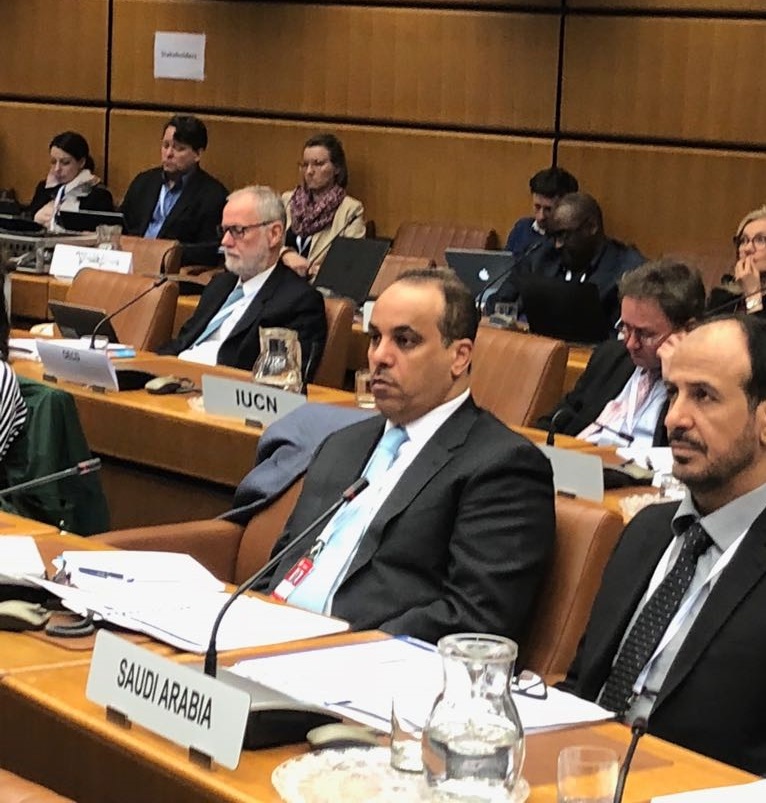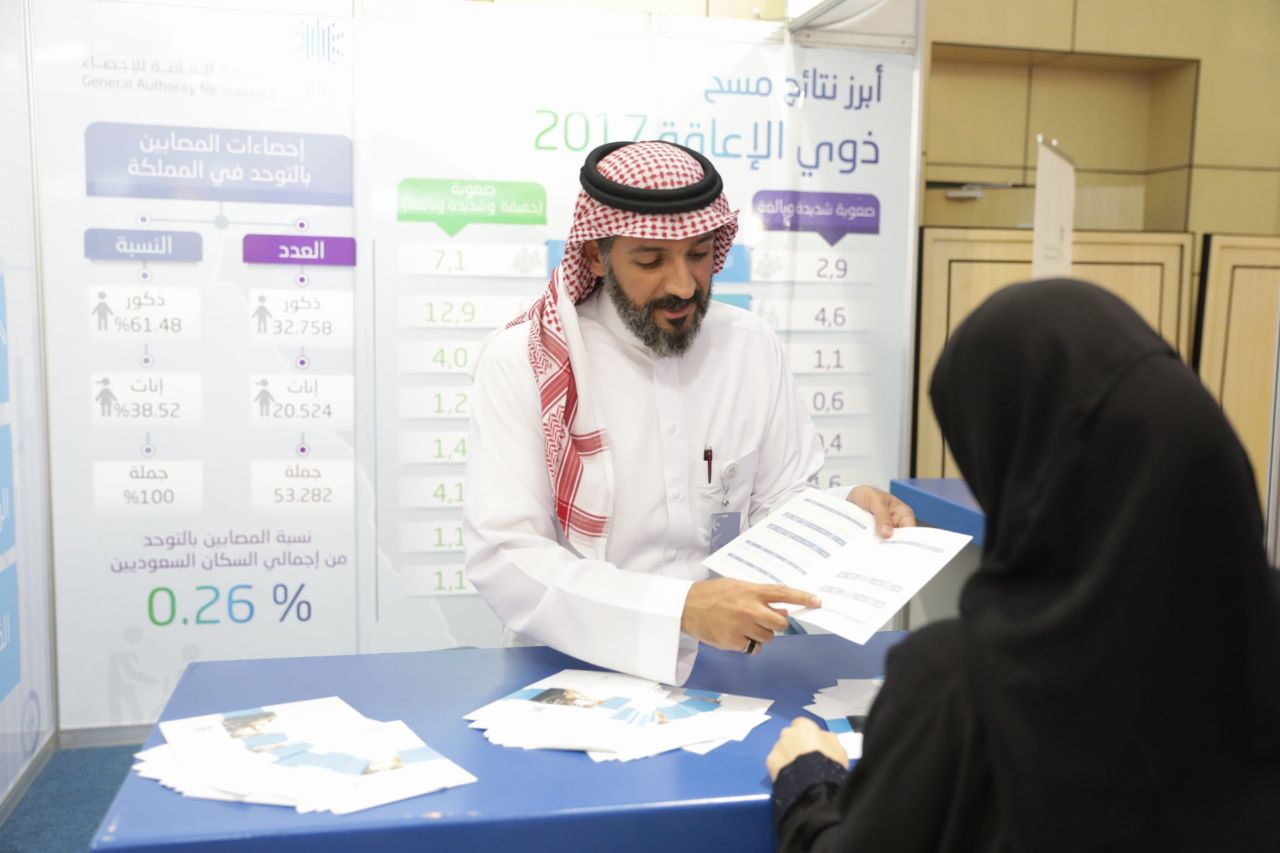
The kingdom concludes its participation in the 7th meeting for the participated international organizations and the experts team of the sustainable development goals’ indicators
16-04-2018

GaStat is stressing on the importance of the second symposium of the Saudi Association for Statistical Sciences
11-04-2018

GaStat and KSU Establish National Observatory for Woman's Participation in Development (NOW)
08-04-2018

GASTAT: Prevalence rate of severe disability among Saudi citizens reaches 2.9%
04-04-2018
Coinciding with its participation in the Fifth International Conference on Disability and Rehabilitation, held under the patronage of the Custodian of the Two Holy Mosques and the Fourth International Exhibition for Disability Equipment “Dhiaa 2018,” which was organized alongside the conference at the Disabled Children’s Association in Riyadh, the General Authority for Statistics (GASTAT) clarified that, based on the results of the 2017 Survey of Individuals with Disabilities among Saudi nationals, the prevalence rate of severe disability was 2.9 percent.
GASTAT indicated that visual difficulties were the most common among Saudis with a single disability, accounting for 46.02 percent, with severity levels distributed as follows: mild (67.8 percent), severe (28.5 percent), and extreme (3.7 percent).
In comparison, the most common difficulty among Saudis with multiple disabilities was mobility difficulty, accounting for 29.13 percent of individuals with multiple disabilities, with severity levels distributed as follows: mild (54.07 percent), severe (29.22 percent), and extreme (16.71 percent).
According to the survey results, the Riyadh region recorded the highest concentration of Saudis with disabilities among all regions, representing 25.13 percent of the total, while Najran region recorded the lowest, at 0.87 percent.
GASTAT also participated in the Fourth International Exhibition for Disability Equipment with a booth that showed the key findings from the disability survey. GASTAT delivered an introductory lecture on the survey, presented by Mr. Abdullah bin Zaid Aldaafs from the Department of Population and Vital Statistics, and also took part in the workshop on the National Disability Registry.

The kingdom concludes its participation in the 7th meeting for the participated international organizations and the experts team of the sustainable development goals’ indicators
16-04-2018

GaStat is stressing on the importance of the second symposium of the Saudi Association for Statistical Sciences
11-04-2018

GaStat and KSU Establish National Observatory for Woman's Participation in Development (NOW)
08-04-2018

GASTAT: Prevalence rate of severe disability among Saudi citizens reaches 2.9%
04-04-2018
Coinciding with its participation in the Fifth International Conference on Disability and Rehabilitation, held under the patronage of the Custodian of the Two Holy Mosques and the Fourth International Exhibition for Disability Equipment “Dhiaa 2018,” which was organized alongside the conference at the Disabled Children’s Association in Riyadh, the General Authority for Statistics (GASTAT) clarified that, based on the results of the 2017 Survey of Individuals with Disabilities among Saudi nationals, the prevalence rate of severe disability was 2.9 percent.
GASTAT indicated that visual difficulties were the most common among Saudis with a single disability, accounting for 46.02 percent, with severity levels distributed as follows: mild (67.8 percent), severe (28.5 percent), and extreme (3.7 percent).
In comparison, the most common difficulty among Saudis with multiple disabilities was mobility difficulty, accounting for 29.13 percent of individuals with multiple disabilities, with severity levels distributed as follows: mild (54.07 percent), severe (29.22 percent), and extreme (16.71 percent).
According to the survey results, the Riyadh region recorded the highest concentration of Saudis with disabilities among all regions, representing 25.13 percent of the total, while Najran region recorded the lowest, at 0.87 percent.
GASTAT also participated in the Fourth International Exhibition for Disability Equipment with a booth that showed the key findings from the disability survey. GASTAT delivered an introductory lecture on the survey, presented by Mr. Abdullah bin Zaid Aldaafs from the Department of Population and Vital Statistics, and also took part in the workshop on the National Disability Registry.